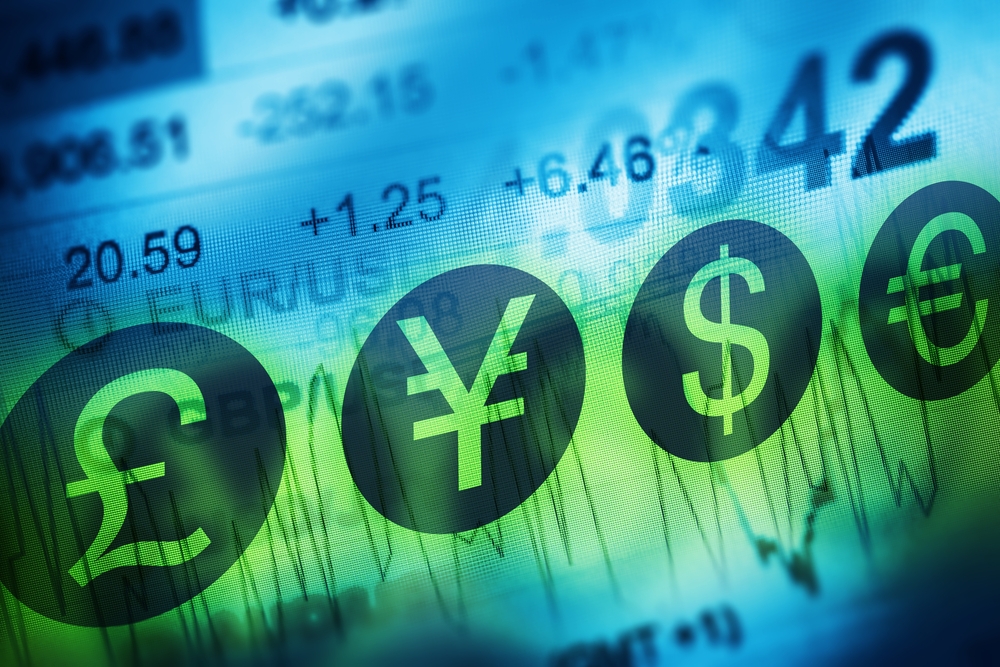A Step-by-Step Guide to Forex Trading

The following article is a great place to get a broad understanding of forex trading, some fundamental principles and how to get started. But first, let’s look at the why.
People choose to trade forex for several reasons. They might be looking to speculate on short-term price fluctuations, hedge against currency risk or diversify their investment portfolios. Thinking about why you want to trade is the major point when you create your forex trading strategy – and a little tip here, creating a strategy is perhaps the wisest thing you’ll learn when trading.
However, we’re getting ahead of ourselves. Let’s start with this beginner’s guide to forex trading, step by step.
What is forex trading?
Forex trading refers to the trading of currencies, where one currency is traded against another. For example, you can exchange the ZAR for the USD and vice versa. The prices of currencies constantly fluctuate against each other, throwing up multiple opportunities for traders to earn from the difference in prices. Retail forex traders attempt to capture these opportunities by purchasing a currency with a low rate while selling one with a higher rate.
Unlike stock trading, forex trading does not occur through exchanges. It is a global market that operates through a network of banks and other financial institutions.
Although a majority of trading is done by large institutional players, like banks and multi-national companies and governments, retail traders (individual traders) are gaining ground, with access to similar tools and conditions as professional traders. However, a small but not insignificant chunk of this volume consists of retail traders.
Retail traders usually participate in the market through derivatives. This is a derivative product that allows you to speculate on the prices of currencies without needing to own any currencies. This way, traders can make the most of both rising and falling prices by speculating on price changes in either direction.
What do you need to start trading forex?
The good news is that it doesn’t take a lot of equipment to start trading forex. Forget the multi-screen setups you see in Wall St. movies. You need very little, and you probably already have some, if not all, of these items below:
A computer/tablet/smartphone
You will need a device to access the markets and execute your trades. Online trading platforms are accessible via the web as downloads to your PC and even smartphones. Check whether your broker offers a robust forex trading app compatible with multiple operating systems, including Windows, macOS, Android and iOS. This will allow you to access your trades and the markets even on the go.
A stable and fast internet connection
Since the trades will be executed through the internet, you need a reliable internet connection.
A trustworthy broker
The broker you choose could mean the difference between long-term success and failure. The first step is to check whether the broker is licensed to provide services in the region where you will be trading. For instance, the regulatory body for South Africa, the FCSA, monitors financial services. Brokers registered with the FCSA offer more secure and accountable services than those not, including segregation of client funds so that the brokerage firm cannot access those funds for their own purposes.
Trade forex with a trusted broker. Trade with Klips>>
Some other factors to check when choosing a broker include:
- Commissions and fees – These add to the cost of trading. Discover all the costs involved when you trade, including ‘roll-over’ fees and spreads.
- Educational Resources – A broker committed to your success will provide robust resources to enhance your knowledge and skills.
- Alerts & Notifications – You might not have the time to monitor the markets constantly. Price alerts and signal notifications can keep you updated on the latest market moves.
- Access to a demo account – The best way to familiarise yourself with your broker’s platforms and learn the markets.
Forex terms you should know
Knowledge of the jargon can make your trading journey more straightforward. Here are the most commonly used terms in the forex market:
Forex Pair
This refers to the currency pair that you intend to trade. For example, the most widely traded currency pair in the world is the EUR/USD. Here, the euro is being traded against the dollar.
Base and Quote Currency
In the above example, the EUR is the base currency, and the USD is the quote currency. This means that when the price of the currency pair is quoted, you will learn how many units of the quoted currency you can buy in exchange for one unit of the base currency. So, if the price of the EUR/USD is 1.0429, it means you can buy €1 for $1.0429.
Bid Price and Ask Price
The bid price is the price at which the base currency (in the above example, the EUR) can be sold. The ask price is the price at which the base currency can be bought.
The ask price tends to be higher than the bid price.
Spread
The spread is the difference between the ask and bid price. The spread is, essentially, the fee that you’re paying the broker for executing the trade. The tighter the spread, the lower the trade cost and vice versa.
The spread is usually represented as “pips.” A pip is the smallest standardised unit by which a currency’s value can change. One pip is usually 0.0001 units of a currency (the exception is the JPY, for which one pip is worth 0.01 units).
Leverage
When trading derivatives, you utilise the advantage of leverage, which is the funds you can borrow from the broker to increase your market exposure. It is usually expressed as a ratio. For example, suppose the leverage is 1:100. This means that the trader needs to put in ZAR 1 to be able to open a position worth ZAR 100, with the broker putting in the remaining funds.
So, leverage can dramatically increase the size of your position well beyond the funds in your trading account. However, remember that while leverage multiplies the potential for profits, it also magnifies potential losses. So, use leverage wisely.
Different brokers offer different leverage ratios. Regulated brokers offer leverage ratios within the parameters defined by the FCSA. The FCSA has placed limits on leverage to limit the losses traders could potentially face.
Lot Size
A lot denotes the size of your trading position. There are three standard lot sizes.
A standard lot refers to 100,000 units of a given currency. A mini lot means 10,000 units, while a micro lot means 1,000 units.
How forex trading works
Let’s take a look at how trading works with a simple example. Suppose you predict that the euro will rise against the US dollar, so you decide to trade the EUR/USD. The current ask price for the forex pair is 1.0429, and the bid price is 1.0425. This means the spread will be between 1.0429 and 1.0425, 0.0004 or 4 pips.
You decide to buy €1 for $1.0429. Now, if you choose to trade a mini lot, which means you buy 10,000 units of the euro, you will need to invest $10,429.
You can either fund the entire amount from the capital in your trading account, or you could choose to use leverage. Now, if your broker offers a leverage of 1:100, you will need to only fund $1,000 (or $1,0429, to be exact), with the remaining being funded by your broker.
When the price of the euro rises to $1.5010, you could choose to close the trade and sell the euro back in exchange for the US dollar. In this example, you would have earned $4,581.
Wrapping Up
Forex trading can be an exciting journey. However, the long-term success depends on various factors, not the least of which is your market knowledge. So, begin by learning more about the forex market, the factors that affect it and the different trading platforms. A good way to do so is by opening a demo account with a regulated broker. This type of account mimics actual market conditions, allowing you to familiarise yourself with all the aspects of forex trading.

Start trading derivatives in currency pairs
This information is written by Klips. The information is provided for general purposes only and does not consider any personal circumstances or objectives. Before acting on this material, you should consider whether it is suitable for your circumstances and, if necessary, seek professional advice. No representation or warranty is given as to the accuracy or completeness of this information. It does not constitute financial, investment or other advice on which you can rely. Any references to past performance, historical returns, future projections, and statistical forecasts are no guarantee of future returns or future performance. Klips will not be held responsible for any use that may be made of this information and for any consequences that may result from such use. Hence, any person relying on the information on this page does it at their own risk.
Learn more, understand the markets
Learn

Top AI Companies to Watch: A Deeper Dive
ByAndreea
 3 min.
3 min.Learn

Charting Your Course to Trading Success with Klips
ByAndreea
 3 min.
3 min.Learn

Navigating the ECB’s Monetary Policy with Klips: Empowering Your Trading Strategy
ByAndreea
 3 min.
3 min.Learn

Harness the Power of Dollar-Cost Averaging on Klips Trading Platform Amidst a Bear Market
ByAndreea
 3 min.
3 min.Learn

Blockchain: The Future of Finance?
ByAndreea
 5 min.
5 min.Learn

AMC stock price – What Influences it the most
ByAdmin
 5 min.
5 min.Learn

What are trading signals?
ByAdmin

Trading

3 popular candlestick patterns for forex trading strategy
ByAdmin
 4 min.
4 min.Trading

Learn how simple forex trading is in South Africa
ByAdmin
 5 min.
5 min.Trading

The Warren Buffet of India: Find Out How Rakesh Jhunjhunwala Built His Fortune
ByAdmin
 7 min.
7 min.



